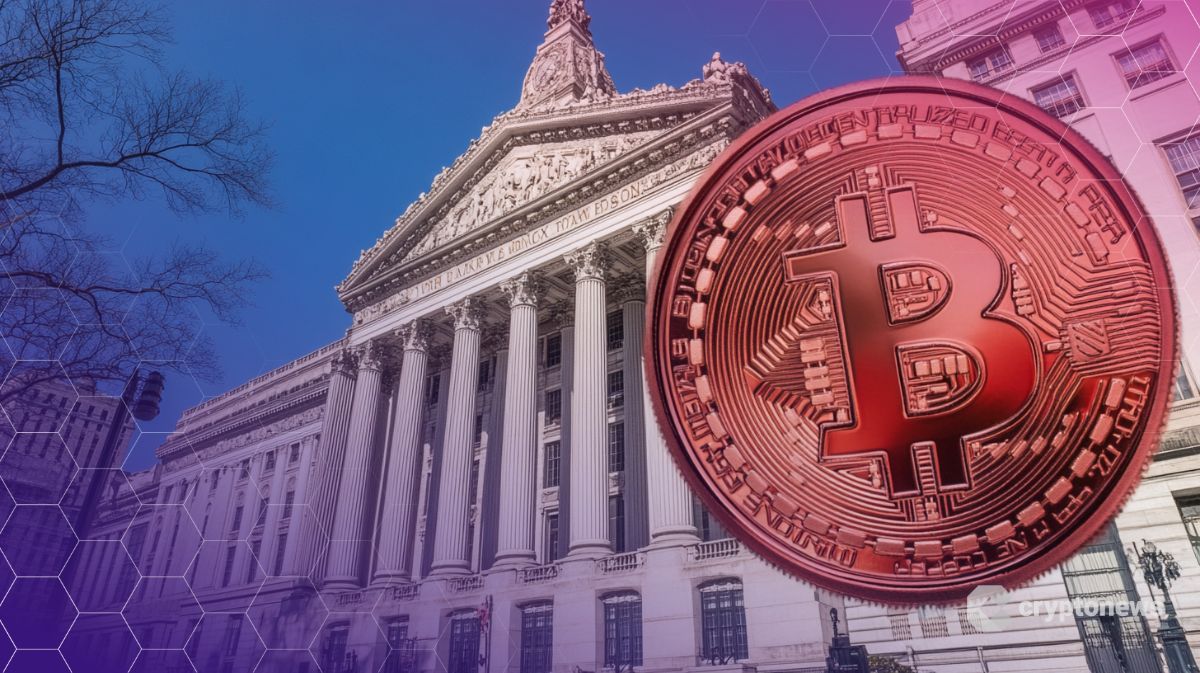
Major financial trade associations, including the Global Financial Markets Association and the Institute of International Finance, formally requested the Basel Committee on Banking Supervision pause implementation of its 1,250% capital requirement for crypto exposures.
The August 19 letter argues that the 2022 framework has become obsolete due to rapid developments in distributed ledger technology and the explosion of regulated digital asset markets since its adoption.
The coalition’s “Impact of Distributed Ledger Technology in Capital Markets” report highlights how current rules make it “uneconomical for banks to meaningfully participate” in crypto markets, creating a bifurcated financial system where digital assets operate largely outside traditional banking supervision.
The groups cite examples like tokenized U.S. Treasury securities receiving punitive 1,250% risk weights simply for existing on public blockchains.
Banking Industry Pushes Back Against ‘Cliff-Effect’ Capital Punishments
The associations criticized the Basel framework’s rigid distinction between permissioned and permissionless ledgers, arguing it creates arbitrary “cliff-effects” where otherwise low-risk assets face massive capital requirements.
Under current rules, tokenized government securities on public blockchains receive the same punitive treatment as speculative cryptocurrencies despite backing by U.S. Treasury bonds.
The letter recommends eliminating permissioned versus permissionless ledger distinctions for Group 1 crypto asset eligibility, noting that risk should focus on the underlying asset rather than blockchain infrastructure.
Additionally, the groups propose removing the “infrastructure risk add-on” for Group 1 cryptoassets as unnecessary and inconsistent with technology neutrality principles.
Banking groups also challenged the current 1% and 2% exposure limits for Group 2 cryptocurrencies, calling them “too restrictive” and featuring punitive cliff effects that discourage regulated entities from offering crypto services.
The restrictions push demand toward non-bank institutions operating outside traditional regulatory oversight.
Furthermore, the associations questioned the empirical justification for 100% capital risk weights on Group 2a cryptoassets like Bitcoin and Ethereum.
April 2025 data shows these assets trade with higher volumes than many large-cap equities and major foreign exchange pairs, with observed volatility suggesting much lower appropriate risk weights around 54%.
Concurrently, Wall Street’s crypto embrace accelerates through multiple channels.
Major ETH treasury companies recently pitched Manhattan investors on Ethereum as tomorrow’s financial infrastructure foundation, with corporate treasuries now controlling over $28 billion worth of Ether across public companies.
Institutional Integration Reshapes Traditional Banking Landscape
Earlier in June, JPMorgan launched its JPMD digital deposit token on Coinbase’s Base network, marking the banking giant’s biggest step into public blockchain technology.
The fully dollar-backed token targets institutional clients initially, with CEO Jamie Dimon acknowledging the bank’s strategic shift, stating, “we’re going to be in it and learning a lot.”
Major banks are also developing both individual stablecoins and collaborative industry-wide digital currencies, though none are expected before year-end.
Bank of America CEO Brian Moynihan recently confirmed his institution’s stablecoin preparations, describing an anticipated “complex array” of digital currency offerings.
However, internal banking concerns mount about stablecoins potentially undermining traditional deposit bases.
Federal law requires stablecoin backing funds to be invested in government bonds, providing guaranteed profits to banks while offering depositors no interest.
Unlike traditional accounts, stablecoins carry no federal deposit insurance protection.
The crypto IPO market has simultaneously exploded, with Circle’s June debut valuing the stablecoin issuer at $35 billion after shares more than doubled.
Bullish raised over $1.15 billion in its recent public offering, while BitGo, Grayscale, and Gemini have submitted confidential listing filings, according to Reuters.
Notably, Renaissance Capital’s Matt Kennedy noted in the Reuters report that “Circle’s trading has really been the biggest green light for the industry,” with positive regulatory developments and friendly oversight creating powerful momentum for public offerings.
Looking forward, the Basel Committee is facing pressure to modernize rules that industry participants argue prevent regulated institutions from safely integrating digital assets while pushing activity toward less supervised entities.
The associations’ recommendations aim to create risk-sensitive frameworks that recognize the technological development of Crypto while maintaining financial stability.



